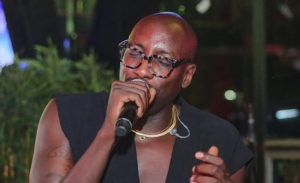The rebel painter who ushered in a new era of Indian art
4 min read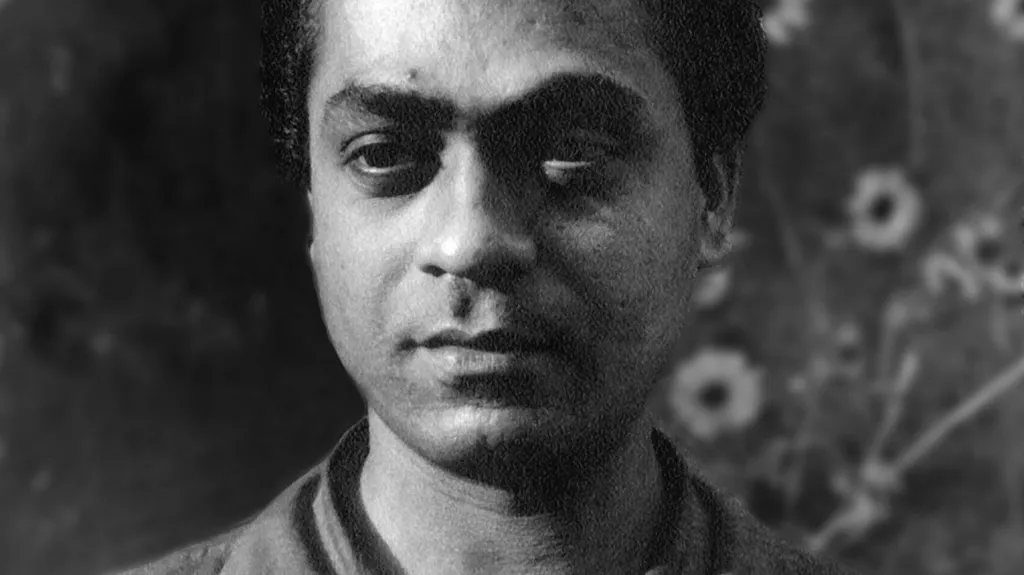
Some artists achieve legendary status during their lifetimes, yet remain enigmatic figures long after their passing. One such artist is Vasudeo Santu Gaitonde, who was born on November 2, 1924, and is celebrated as one of South Asia’s foremost abstract painters. Gaitonde played a pivotal role in ushering in a new era of Indian art during the mid-20th century, as part of a generation of artists that challenged traditional norms.
Drawing inspiration from Western techniques, Gaitonde’s work remained deeply rooted in Asian philosophies. His paintings, characterized by a unique interplay of light and texture, are often described as “meditations on the light and universe,” according to Yamini Mehta, former international head of South Asian Art at Sotheby’s. She noted that the dynamic play of light and shadows in his work evokes a profound sense of calm.
Over his extensive career, Gaitonde eschewed the pursuit of fame or wealth, yet his artwork continues to command high prices at auctions. In 2022, an untitled oil painting by him sold for a staggering ₹420 million (approximately $5 million), setting a new record for Indian art. The piece’s bluish hues reminiscent of the sea or sky captivated collectors and art enthusiasts alike.
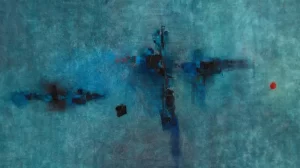
Living much of his life as a recluse, Gaitonde was profoundly influenced by Japanese Zen philosophy, which often permeated his artistic creations. In a rare 1991 interview with journalist Pritish Nandy, he reflected on the essence of his work: “Everything starts from silence. The silence of the canvas… Your entire being is working together with the brush, the painting knife, the canvas to absorb that silence and create.”
Originally hailing from Goa, Gaitonde’s family later moved to Mumbai, where they resided in a modest three-room dwelling in a chawl, a tenement complex for the city’s working class. Gaitonde’s artistic journey began when he enrolled in the prestigious JJ School of Arts in Mumbai in 1946, despite his father’s disapproval of art as a viable career. Undeterred, he funded his own studies and graduated with a diploma in 1948.
During his early career, Gaitonde became associated with the Progressive Artists Group, formed in 1947 in Mumbai to promote new artistic forms. This influential group included renowned artists like Francis Souza, S.H. Raza, M.F. Husain, and Bhanu Athaiya, the first Indian to win an Oscar. Gaitonde also contributed to the Bhulabhai Desai Memorial Institute, a creative hub that attracted notable figures such as sitarist Ravi Shankar.
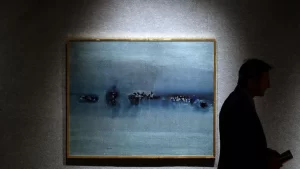
According to artist and writer Satish Naik, this period was a vibrant time for Mumbai’s art scene. Indian art at the time was largely characterized by realism, found in the murals of the Ajanta caves and Mughal miniatures. Gaitonde initially produced realistic works but soon rejected this form, opting for abstraction instead. “In that sense, he was a rebel,” Naik remarked. “He wanted to paint as it pleased him, not as someone dictated.”
Gaitonde’s spiritual inclinations deeply influenced his artistic evolution. In a 1963 questionnaire for New York’s Museum of Modern Art, he stated, “My paintings are nothing else but the reflection of nature.” His work caught the attention of Morris Graves, a celebrated American abstract painter, who, after visiting India, lauded Gaitonde as one of the finest painters he had ever encountered.
In 1964, Gaitonde moved to New York with the help of a Rockefeller Fellowship, marking a significant phase in his career. This experience allowed him to connect with American modern artists and further refine his style. By 1971, he received the Padma Shri, India’s fourth-highest civilian award, recognizing his contributions to art.
Despite his growing recognition, Gaitonde became increasingly reclusive over the years. His close associate and fellow artist, Laxman Shreshtha, recounted how M.F. Husain would often attempt to visit Gaitonde, but if he chose not to engage, he would simply not open the door.
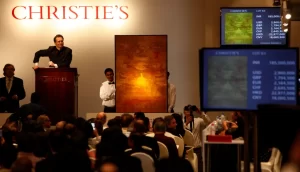
After suffering a spinal injury in 1984, Gaitonde’s output dwindled. “I still continue to paint; I make paintings in my head,” he once told gallerist Dadiba Pundole. This decline in productivity only added to the allure and mystique surrounding his work.
Gaitonde passed away in 2001 at the age of 77, his death largely unreported as he had chosen a life of obscurity in his later years. However, his art continues to resonate globally. Cara Manes, an associate curator at the Museum of Modern Art, described Gaitonde’s works as embodying what silence might look like, highlighting the shimmering effects that emerge from his solid, assertive brushwork.
Ultimately, for Gaitonde, art was a deeply personal journey. He once stated, “I let the colours flow and watch. That is my painting.” His legacy remains a testament to the power of art as a medium of self-expression and contemplation.





